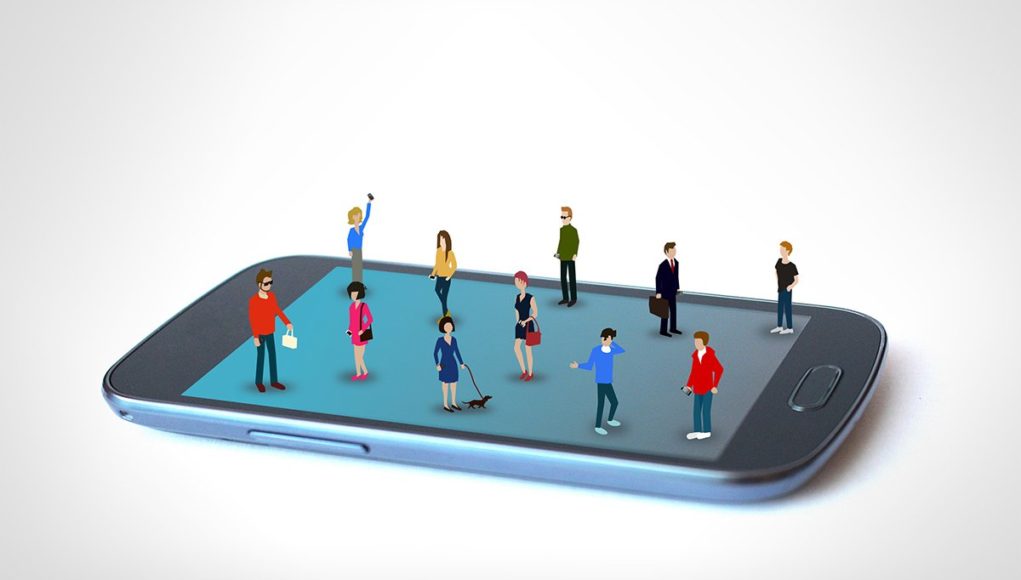For entrepreneurs seeking to reach a target audience, mobile marketing can offer endless opportunities.
But first, it is important that you adjust your marketing plan to meet the needs of the modern mobile consumer.
How smart entrepreneurs reach people on smart devices
According to the Pew Research Center, 91% of teens use the internet on a mobile device.
Here in Bangkok, where I’m based, you can’t go far without seeing someone on a device at work, on the sky train or while out at a bar or restaurant. People may walk right over you, head down as they send that SMS or status update.
Mobile devices from Samsung, Apple, Google, Huawei, Sony and others are experiencing explosive growth. The way the world communicates has changed because of digital technology. People love their devices. And why not?
They have made us more productive, globally connected and they have improved the quality of life.
Mobile devices have overtaken desktop and laptop computers as the primary tool for going online.
The convenience, accessibility, and ease of use make us take them to our bedroom and or even bathroom. How many times do you hear voices coming from the bathroom stall as someone continues a conversation? Awkward, right? And even annoying. Sometimes I wonder if the person on the other end is getting the visual. But I digress.
Let’s talk about you, the entrepreneur.
How can you use these pistols of power to reach millions of people across the country or around the world? Because that’s what we really want. Not to just talk, play games, and take pictures — but to actually change the world with our mission.
I’m going to share with you three simple ways that you can reach millions of people on their mobile devices. You’ll need to test each method with your specific audience to see which one or more of them delivers the best business results.
1. SMS Messaging
SMS (Short Message Service), or text messages, are easily the most effective way to stay in touch with your customers and prospects.
The great thing is that 90% of SMS are read within the first three minutes. And consumers are increasingly open to receive SMS from businesses they support. But less than half of businesses (48%) are currently equipped to handle any form of messaging. See how this can give you a competitive advantage?
Now don’t get careless and sloppy with this news. Get permission. Have customers opt-in and make it easy for them to get off your list. Why bother sending your important messages to people who don’t want to receive them?
And speaking of messages how can you use text messaging as an entrepreneur?
You could send SMS coupons and vouchers to subscribers to help them save money. Another thing is to create a sense of urgency and scarcity by limiting the time to present the coupon at your store location.
Getting customer feedback is important. So what if you create a mobile survey for your clients and reward them by sharing the results if they participate?
Some of you may want to make new product announcements using text messaging. The subscribers get early access to the software or upgrades. For events, you can offer early entry or prime seating in the venue.
You’re really only limited by your imagination and your ability to create SMS tactics that are relevant and valuable for your audience.
Since SMS messages can be sent on extremely short notice, you can use them strategically to increase revenue for your business.
What if you own a restaurant and are having a slower-than-normal week? Using SMS, you could send a promotional text to your customers on Thursday morning, announcing a free appetizer with any meal they purchase that evening. The message would be delivered immediately, and would quite likely generate additional business and profits that you wouldn’t otherwise have received.
2. Email
Email is your best tool for building relationships with your target audience.
We’re all familiar with email and so are your customers and prospects. This makes it like an old friend, and people are very comfortable with receiving it on the mobile devices. However, email does not get read as quickly as SMS, so it’s not as effective if you’re sending extremely time-sensitive information.
The upside is that you own your email list and you can build it into a valuable asset. When you send your message to an email subscriber that has opted-in to your list, that message remains in their inbox. And if you decide to create a newsletter you can include multiple stories, promotions, images and other relevant content personalized to your subscribers.
What if you have one million opt-ed in email subscribers and send them your marketing promotion?
If only 5 percent of them convert on your offer, you would have 50,000 direct sales. This is why many entrepreneurs continue to focus on list building as their number one objective for internet marketing efforts.
Unlike buying advertising on search engines or social media, you don’t have to pay to get your message out. And you can send to your list as often as you like.
The return-on-investment (ROI) makes email list-building worth the long term effort it often takes to get a productive, responsive and buying list.
Today, email is relatively low-cost. With most service providers, for a single monthly fee, you can send unlimited messages to your subscribers. And you can personalize messages to your audience based on their click, browse and purchase behavior.
3. Social Media
Since 2005, the number of people who use social media has climbed from 5% to 69% and it shows no sign of slowing down. Worldwide, there are over 3 billion active social media users.
The mega social media sites including Facebook, Twitter, YouTube, LinkedIn, Instagram, Pinterest and Snapchat are abundantly popular with mobile internet users. These platforms are working to keep the audience on the site longer. They’re constantly adding new features like purchase buttons, messaging, expanded publishing and video to make the sites even more addictive.
For entrepreneurs, using social media platforms correctly spells the difference between business success and failure.
Growth in organic traffic through viral or relevant content can make your company an overnight success.
While consumers love social media, it is not the best channel for connectivity. Consider your Facebook business page. You’ve got thousands of fans who like your page and want to connect with your brand. So you post videos, status updates, images and share content to add value for them. Unfortunately, the Facebook algorithm takes over and limits the number of your fans that actually see your content in their newsfeed.
The organic reach of Facebook content continues to plummet. To get your message to your audience, you will have to fork over money to Facebook for advertising, and “boost” your posts.
Look, I’ve got nothing against paid advertising, it’s a great tool. But as entrepreneurs, we like to keep our money in our own bank accounts. We only use these platforms because they have the bigger audience.
So while you need to maintain a powerful presence on these social sites for your business, you need to bring them over to your own properties (hint: email list) so you can advertise and reach them for free.
To sum it up, entrepreneurs can reach millions of people on their mobile devices by using SMS, email and social media.
Each platform has advantages and disadvantages, so the key is to always know your business goals and objectives. Fast reach for a promotion (SMS) or long-term building of an asset (email).
The only way to lose is to ignore these platforms and let your competitors build their brand while stealing your current and future audience.
Now over to you. Which is your favorite platform to reach millions and how are you using it? Let me know in the comments.
For more business tips, check our entrepreneurship section and subscribe to our weekly newsletters.







Didn’t know sms is still a thing. Thanks for the article, Norm!
You’re welcome Alexander. Yes, lots of opportunity in the SMS space.